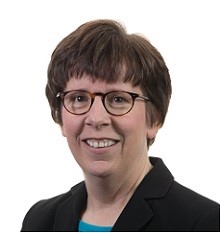The purpose of most actuarial methods is to estimate ultimate losses, or total losses, for a particular accident period. Once an estimate of the ultimate losses is determined, outstanding losses or required reserves are easily calculated by subtracting the paid losses from these total losses.
Almost all actuarial models rely on loss development patterns, or how reported and paid losses are expected to grow through time. Actuaries build loss development triangles to analyze these growth patterns. The assumption behind loss development patterns is that future losses will grow in a manner similar to the way that past losses have grown.
The loss development method is a very common method seen in actuarial reports. Suppose I am at a football game and my team scores 20 points in the first quarter of the game. One estimate that I can make of my team’s total score for the game is 80 points (4 quarters x 20 points). This is very similar to the loss development method which takes the reported or paid losses and simply multiplies them by a growth factor to estimate ultimate losses. The weakness of this method, as seen by my estimated total score of 80 points, is that it is subject to huge variability depending on how much is reported or paid in a very short period of time. As the accident period ages, however, this method becomes more stable.
The Bornhuetter-Ferguson method is another method often utilized. It addresses some of the volatility concerns seen in the loss development method for immature accident periods. Suppose again that my team has scored 20 points in the first quarter of the game. I know that my team averages 28 points a game. Another way I can estimate my team’s total score for the game is to take the 20 points my team has already scored and add 21 points, or ¾ of my team’s average score of 28 points (for the 3 remaining quarters), to get an estimated total score of 41. This seems like a much more realistic estimate of my team’s total points. This is similar to the Bornhuetter-Ferguson method which combines the reported or paid losses to date with an estimate of the unreported or unpaid losses. The estimated unreported or unpaid losses are based on a forecast estimate of total losses and the growth patterns observed in the loss development triangles.
The expected loss method is another possible technique. In my football example above, my team averages 28 points a game. I can estimate that they will score 28 points today, even though they have already scored 20 in the first quarter. The expected loss method relies strictly on the experience from past accident periods and is most likely only useful for a very immature accident period.
Because most actuarial methods rely heavily on assumed growth patterns, it is important that your actuary look at your specific growth patterns and not just rely on industry sources. Even if you don’t have a huge volume of losses, information can be gleaned from these patterns that will assist in making a more accurate estimate of ultimate losses for your entity. I think I may put together a “point development triangle” for my team to assist with my in-game estimates of total points instead of assuming they will increase evenly over time!

By: Cheryl White
Partner & Consulting Actuary, Select Actuarial Services
Summary of Qualifications
Cheryl has over 20 years of experience in the property casualty actuarial field. She has earned the highest credential, Fellow, in the Casualty Actuarial Society and is a member of the American Academy of Actuaries.
Responsibilities
As a member of Select Actuarial Services, Cheryl provides expert consulting services to many of our clients and provides leadership as the signing actuary for numerous projects produced by other members of the practice. Her experience includes reserve analyses, loss forecasting, probability analyses and large loss modeling.
Along with her client consulting, Cheryl has spoken on a range of actuarial topics at several industry conferences in both the public and private sectors and regularly attends a wide variety of risk conferences.
Business Experience
Prior to forming Select Actuaral Services in 1999, Cheryl was an associate consulting actuary with Sedgwick Actuarial Services and worked for the property and casualty rating section of the Tennessee Department of Insurance.
Personal Affiliations
In addition to being a Fellow of the Casualty Actuarial Society and a member of the American Academy of Actuaries, Cheryl has served on the Casualty Actuarial Society Examination Committee for many years.
Education
Cheryl has her Bachelor of Science degree in mathematics from the University of Mississippi and her Master of Science degree in mathematics from Vanderbilt University.



